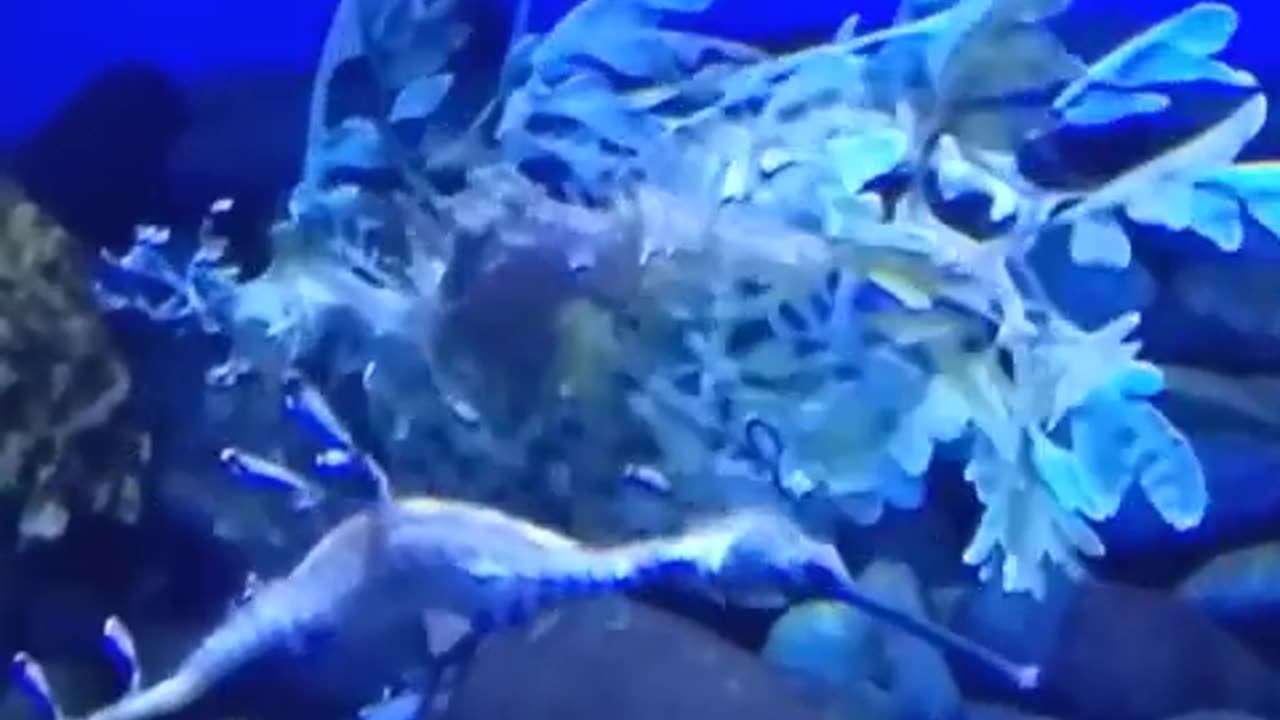Premium Only Content

THE LEAFY SEADRAGON
At first glance, the delicate appendages that earn leafy seadragons their claim to fame may give you the impression that they’re used to swim through the water. It may be surprising, but none of these gauzy attachments are actually used for movement; rather, their sole purpose is to serve as camouflage, blending them into the lush kelp forests and seaweed surrounding them and rendering them nearly invisible.
Okay, so now we know that the leafy seadragon doesn’t use its leafy body parts to swim. You may be wondering, then, what exactly they use to move around the ocean. The answer is simple, though not very impressive. They have two incredibly thin fins that they use to steer as they drift through the water, with swim bladders that help them maintain buoyancy. Those fins are so thin, in fact, that they’re borderline transparent, so you’d need to look extremely closely in order to see them.
We get it, they may look delicate. But don’t come at them. They have a solid coat of armor under all that greenery! Unlike other fish, these animals don’t have scales. Instead, their bodies are covered with bony plates of armor-like protection.
Leafy seadragons thrive exclusively among the rocky reefs that border the southern coast of Australia, where they rely on their favorite seagrass beds to help them activate their one-of-a-kind, leafy disguise.
Think it’s interesting that they’re only found in and around Australia? The country happens to think so, too; this feathery sea creature is the official marine emblem of southern Australia!
That’s right, you guessed it … the seahorse! Seadragons are very closely related to other long-snouted swimmers, including seahorses and pipefish, all claiming the family of Syngnathidae.
Seadragon dads are powerhouse dads.
Leafy seadragon daddios proudly take on the physical burden of bringing baby seadragons into the world, much like you may have heard about seahorses papas. However, unlike seahorses, male seadragons don’t have a pouch near their bellies; instead, they have a flap-like area under their tails where they house growing fertilized eggs that they receive from female seadragons. When it’s time for the teeny tiny dragon kids to greet the world, daddy dragon will bring them into the world over the course of up to two days.
-
 54:05
54:05
TheGetCanceledPodcast
4 hours ago $4.31 earnedThe GCP Ep.11 | Smack White Talks Smack DVD Vs WorldStar, Battle Rap, Universal Hood Pass & More...
39.7K8 -
 13:37
13:37
Exploring With Nug
8 hours ago $2.92 earnedSUV Found Underwater Searching For Missing Man Jerry Wilkins!
27.8K -
 LIVE
LIVE
xBuRnTx
3 hours ago1st Warzone Stream Online
447 watching -
 6:10:21
6:10:21
JdaDelete
1 day ago $2.01 earnedDino Crisis - Sega Saturday
23.9K1 -
 23:22
23:22
MYLUNCHBREAK CHANNEL PAGE
1 day agoUnder The Necropolis - Pt 5
32.8K14 -
 2:26:11
2:26:11
Jewels Jones Live ®
1 day agoWINNING BIGLY | A Political Rendezvous - Ep. 108
87.9K33 -
 2:04:49
2:04:49
Bare Knuckle Fighting Championship
4 days agoBKFC FIGHT NIGHT MOHEGAN SUN FREE FIGHTS
33.4K1 -
 25:09
25:09
BlackDiamondGunsandGear
6 hours agoYou NEED to be Training For Whats to Come
23.5K7 -
 20:03
20:03
Sideserf Cake Studio
11 hours ago $1.26 earnedA HUNGRY HUNGRY HIPPOS CAKE THAT ACTUALLY WORKS?
26.3K5 -
 23:51
23:51
marcushouse
12 hours ago $0.89 earnedStarship’s Next Move Is Coming Sooner Than You Think!
17.5K2